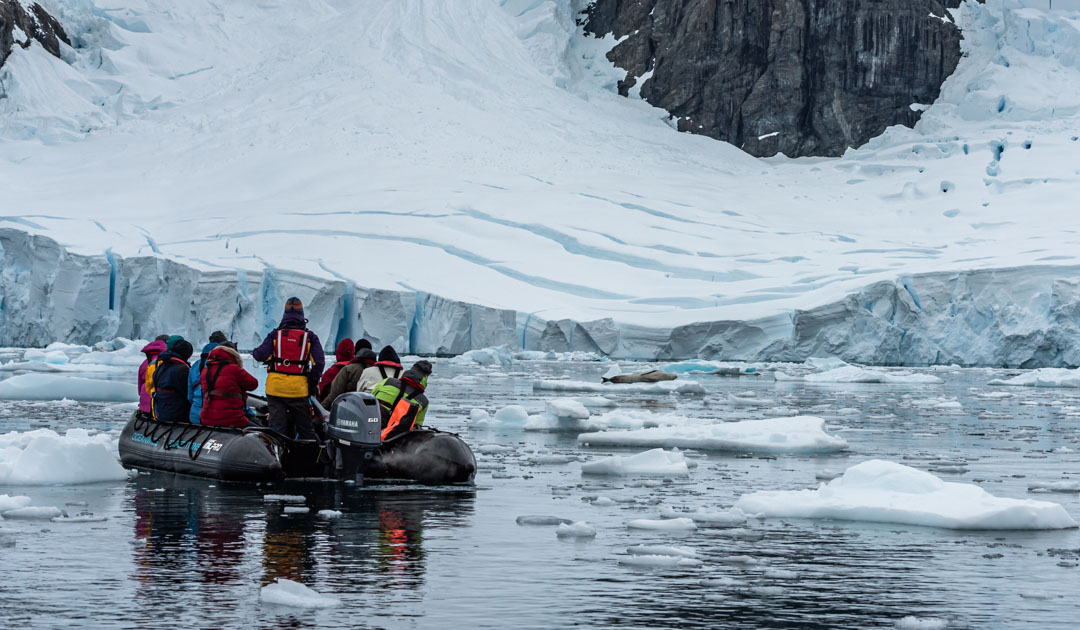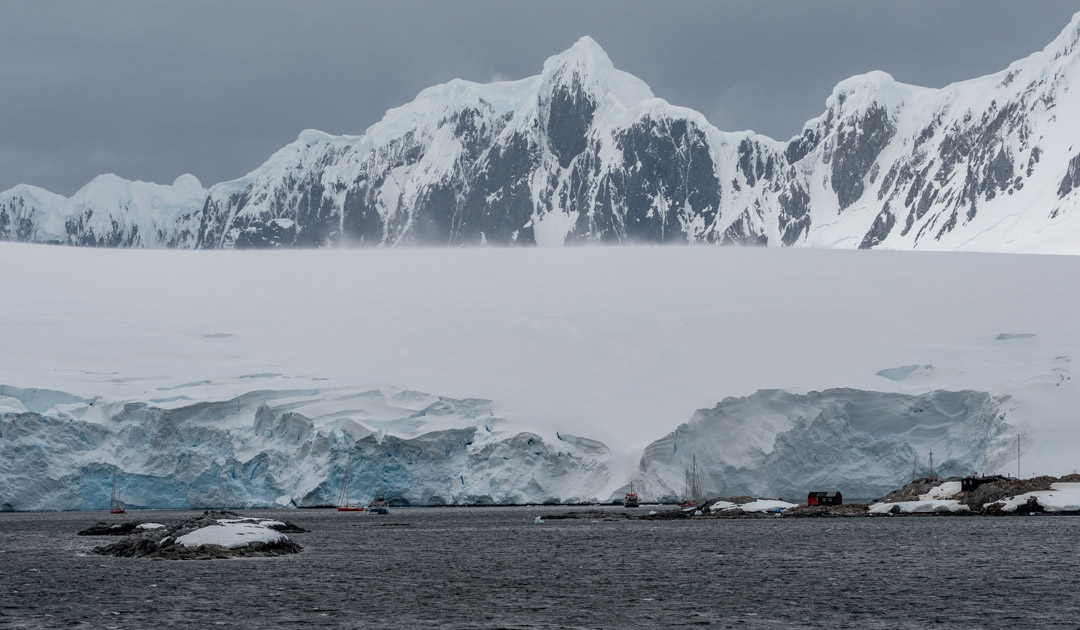
After a two-year pandemic-related break, the Dutch Polar Symposium was held again for the first time on May 19, 2022, bringing together (young) scientists, artists, representatives from the tourism industry and interested parties from the Netherlands in The Hague. The symposium focused on sustainability in the polar regions, with both scientific and commercial activities under the microscope. A particular focus was on tourism in the polar regions, especially in Antarctica, and its development in the near future.
The polar regions have always exerted a strong attraction on people. But while traveling to the Arctic and Antarctic was reserved for daring explorers and whalers until about 170 and 60 years ago, respectively, more and more visitors have been drawn to the cold regions every year since the dawn of commercial tourism in the polar regions.
In the Antarctic summer of 1991/1992 – the season following the adoption of the Environmental Protocol to the Antarctic Treaty – a total of about 6,400 passengers traveled to Antarctica aboard ten small expedition ships or yachts belonging to six operating companies and participated in shore excursions. Since then, the number of annual visitors has grown exponentially, reaching about 74,400 passengers in the 2019/2020 pre-pandemic season, with about a quarter of visitors making a trip that did not include shore excursions. In addition, there were almost eight times as many operators before the pandemic as in the 1991/1992 season, with over 60 ships making a total of 408 cruises. In addition, more and more passengers are traveling directly to the White Continent by air.

However, the vast majority of tourist activities are concentrated on the northwestern tip of the Antarctic Peninsula within just six months of the year. Therefore, at the Polar Symposium in The Hague, several speakers expressed concern that the rapid development of Antarctic tourism could have negative consequences for the unique nature and wildlife in the region – despite the strict conservation requirements set by the Antarctic Treaty, by CCAMLR (Commission for the Conservation of Antarctic Marine Living Resources) and by IAATO (International Association of Antarctica Tour Operators).
For example, Florence Kuyper, self-employed expedition leader, asked herself and the audience several questions regarding the growth of the industry. First, whether one should travel to the polar regions at all. Secondly, whether the ever-increasing number of special offers on the part of the providers (e.g. kayaking, camping, diving, snorkeling, snowshoeing, climbing, skiing and many other activities) enhances the polar experience of the passengers or whether this kind of “entertainment” is perhaps not absolutely necessary in this unique region and the nature experience should be entertainment enough. Kuyper is equally unsure whether entertainment on board should now include fashion shows and karaoke alongside lectures on nature, history, climate change and other topics.
Kuyper is also observing a trend toward more luxury on board expedition ships, for example in the form of wellness areas, fitness rooms, elevators, lounges. It is hardly surprising that the guests also expect more and more from the “program”, which is determined by nature itself: in the morning penguins should drift past the ship on an ice floe, or in the Arctic, after lunch two polar bears lolling in front of the ship, exaggerated.

On the other hand, operators are increasingly integrating offers for nature and environmental education, awareness raising, and participation in citizen science projects or cleanups, which Kuyper believes is likely to be the recipe for success for the industry and is already actively demanded by (future) passengers.
As in other areas of environmental education, such programs contribute to (re)establishing a connection to nature and to the particularly fragile polar regions beyond the immediate experience of nature, and thus to awakening the wish to protect them. For Kuyper, this is the path that the Arctic and Antarctic tourism industry should continue to follow.
While questions remained about the construction of numerous new ships for even more visitors and additional activities during the voyages, Kuyper found a clear answer to the cardinal question: “Should one travel to the polar regions at all?” – “Yes!” as long as appropriate awareness is raised by linking tourism with science and activities.

Antarctic Treaty Parties, advisory parties and scientists have also been watching the increase in tourism in Antarctica with concern for years. Tilburg University, Utrecht University, and Wageningen University & Research therefore launched the joint project “Proactive Management of Antarctic Tourism” last year, which aims, among other things, to “explore new policy instruments that have the potential to limit growing tourism to desirable levels while providing funding for Antarctic conservation.”
Dr. Ricardo Roura, social scientist and environmental advisor to the Antarctic Treaty System, is also advocating for this by recommending appropriate measures to protect Antarctica at the Antarctic Treaty Conference Meetings. These include uniform evaluation of tourism activities, monitoring of tourism impacts, and evaluation of the effectiveness of existing tourism regulations.
The symposium, organized by the Netherlands Polar Program (NWO), the Association for Young Scientists in Polar Science (APECS), and the Dutch Arctic Circle, highlighted that Antarctic conservation is high on the agenda of the Dutch polar community. It now remains to be seen what momentum can be generated by this symposium, which has set clear accents.
Julia Hager, PolarJournal





